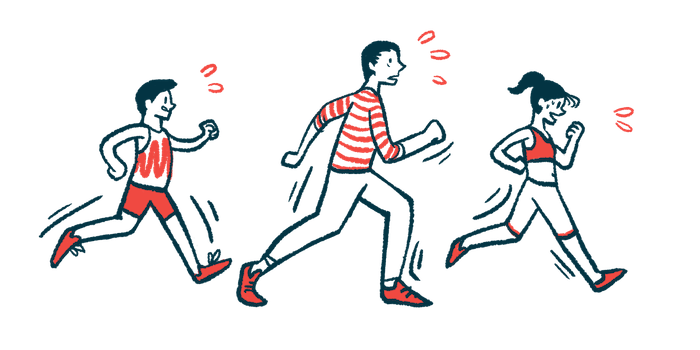Robot-assisted Gait Training Best for Severe Mobility Issues: Study
RAGT training led to significant gains in the 6MWT, the 10-meter walk test, and in fatigue and balance
Written by |

Robotic-assisted gait training (RAGT) may be the most effective form of physical exercise for improving mobility among people with severe multiple sclerosis (MS), according to a recent review study.
Other exercise types, such as conventional walking, treadmill training, and yoga, may also be feasible and effective, however, the researchers found.
“A range of [physical therapy] interventions are likely to be feasible for severely disabled [people with MS],” they wrote, adding that clinical trials of such interventions in this population “should be considered a priority.”
The study, “The Effectiveness of Physiotherapy Interventions for Mobility in Severe Multiple Sclerosis: A Systematic Review and Meta-Analysis,” was published in Multiple Sclerosis International.
Gait impairments are among the most prominent and debilitating symptoms of MS, leading to reduced mobility and less physical activity, particularly among those with more severe disease, compared to the general population.
Low physical activity can result in health issues such as obesity and cardiovascular problems that may further exacerbate the disease burden.
A number of exercises have been shown to reduce fatigue, ease MS symptoms, and improve mobility and quality of life in MS patients. However, most of these are targeted toward those with mild or moderate disease and many physical therapy programs are not feasible for those with more severe symptoms.
To address the impact of exercise therapies among people with severe MS, researchers at the University of Sheffield reviewed and analyzed previous studies that examined several types of interventions.
The team identified 37 publications which cumulatively included 788 MS patients with severe mobility issues. Patients were mostly women (59.6%) and had a mean age of 51.9 years.
The studies evaluated 11 different physical therapy interventions and more than 15 distinct mobility endpoints. Due to the variability, a meta-analysis could only be performed on six outcomes across 11 studies — these six tests had been assessed in at least three studies with the same physical therapy intervention.
Results showed that RAGT, which was assessed in 96 patients across five studies, had the greatest evidence of effectiveness in severe MS. This is a type of training wherein a robotic device is worn to help support the body and provide adaptive power that enables a person to stand and walk during rehab.
RAGT training led to significant improvements in the six-minute walk test (6MWT), which measures the distance one can walk over six minutes. This intervention also led to significant improvements in the 10-meter walk test — a test of the speed at which a person can walk 10 meters — fatigue, and balance in three studies each.
In contrast, body weight-supported treadmill training and conventional walking training showed no overall significant effects in the meta-analysis.
For interventions where fewer than three studies could be analyzed, the team used a method called vote counting. Essentially, an intervention was considered “successful” if it led to significant improvements in at least one mobility-related outcome. The vote counting analysis included 16 interventions from 15 studies.
Seven interventions in six studies were considered beneficial for improving disability in some way among severely disabled patients. These included RAGT, conventional walking training, body weight-supported treadmill training with dual task, blood flow restricted walking, group physiotherapy, one-on-one physiotherapy, and yoga.
While most interventions led to improvements in one to three mobility measures, blood flow restricted walking, wherein blood flow to the legs is at least partially restricted during exercise, resulted in better 6MWT scores, greater walking speed, a shorter time to sit and stand five times, and less fatigue.
That finding suggests that several different interventions could be feasible and effective for severe MS, the researchers noted, adding that the dropout rate in most studies was below 15%.
Overall, “our systematic review indicates that severely disabled [people with MS] can utilise a variety of [physical therapy] interventions,” the researchers wrote.
The findings suggest RAGT may be the most promising approach. RAGT can be adjusted easily to a person’s individual abilities and may activate brain areas that can help with gait and mobility, the research team noted.
“It [is] possible that RAGT is less demanding for severely disabled [people with MS], who might not be able to complete other forms of [physical therapy] effectively,” they wrote. “Future clinical trials could focus upon further investigating the effectiveness of RAGT in larger cohorts and defining the most effective and feasible treatment protocols.”






